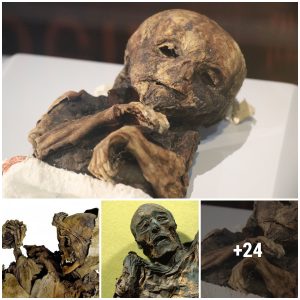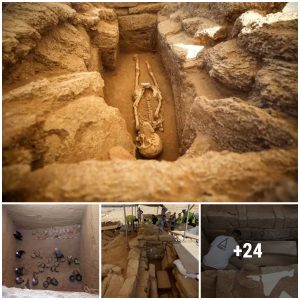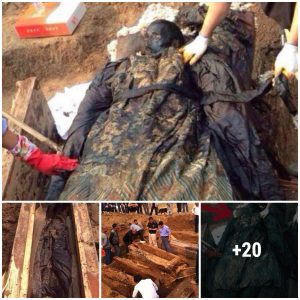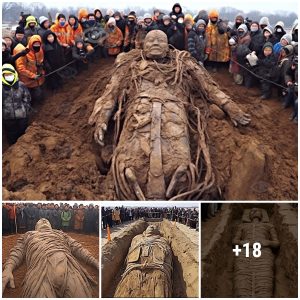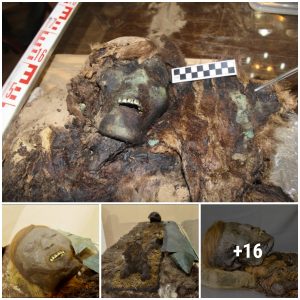A 2,100-year-old pit discovered in China was found to contain not only chariots and miniature statues of cavalry, horses, watchtowers, infantry, civil officials and musicians, but at its center was a scaled down version of the famous “Terracotta Army.”
“The pit, along with several other archaeological sites, was discovered in the winter of 2007 during construction work” and was excavated by the Cultural Relics Agency of Linzi District of Zibo city. According to an article in Live Science archaeologists from this agency teamed up with researchers from the Shandong Provincial Institute of Cultural Relics and Archaeology and they published a report journal Wenwu, recently translated into English and published in the journal Chinese Cultural Relics .

A Miniature Force for the AfterlifeThe southern part of the pit was found to have been filled with:
“formations of cavalry and chariots with models of watchtowers that stand 55 inches (140 centimeters) high and at the pit’s center… 300 infantrymen stand alert in a square formation, while the northern part of the pit has a model of a theatrical pavilion holding small sculptures of musicians.”The archaeologists noted that the newly discovered soldiers are smaller than those in the Terracotta Army and that the infantry sculptures are between 9 and 12 inches (22 and 31 cm) tall, much shorter that the famous life-size soldiers buried near the tomb of the First Emperor.

Fit for a Prince?Based on “the date, size and location of the pit,” archaeologists believe it might been built for Liu Hong, a prince of Qi (a part of China), who was the son of Emperor Wu (reign 141–87 BC).” Based in Linzi, near the pit, Hong died in 110 BC without any heir, archaeologists wrote in their journal article. The scientists also wrote that “the vehicles, cavalry and infantry, laid out in a square formation, were reserved for burials of the monarchs or meritorious officials or princes” and they suspect Hong’s royal burial might lie undisturbed nearby.
Substantiating their suspicions, older residents in the area reported descriptions of “a prominent earthen mound, some 13 feet (4 meters) high, near the pit,” reports which are corroborated by an aerial photograph taken in 1938 by the Japanese Air Force. However, the study says that “Sometime in the 1960s or 1970s, workers removed the earth and flattened the area in order to widen the Jiaonan-Jinan Railway” and while “There are possibly architectural remains or a path leading from the pit… There is no way to explore the main burial chamber” believing that “the tomb itself may have been destroyed.”

What Was The Function of Chinese Terracotta Armies?This particular form of ritualized funerary art began with the burial of the First Emperor in 210 to 209 BC which is arguably one of the most famous archaeological sites anywhere in the world, discovered by villagers in 1974. According to a Daily Mail article about the latest terracotta findings “The figures vary in height according to their roles, with the tallest being the generals. Current estimates [of the full sized terracotta army at X’ian] are that there were over 8,000 soldiers, 130 chariots with 520 horses and 150 cavalry horses, the majority of which are still buried.”

Archaeologists know that the specific purpose of the warriors was to ‘protect’ emperors in their journeys into the corridors of the afterlife and they are thought of as of “crucial importance to our understanding of his attempts to control the world even in death.” Second in importance to being protected after death, Chinese emperors, it would seem, also required to be ‘entertained’, a claim which is made evident in the discovery of terracotta “acrobats, bureaucrats, musicians and bronze birds” at the First Emperor’s grave and the “model of a theatrical pavilion holding small sculptures of musicians” found at the new pit.
Terracotta Warrior WrangleOver the last decade the terracotta grave warriors have travelled from China and have been displayed in museums and universities in several countries, but these new statues won’t be coming to North America any time soon. And this has nothing to do with current trade wars or political wrangling, but because of the open wound in American – Chinese cause in 21st December 2017 when a 24-year-old American man was arrested by the FBI for breaking off and then stealing part of a $4.5 million Terracotta Warrior.
According to a report on Ancient Origins the Chinese government was pressing for a heavy jail sentence and as of yet the case is not closed, and until such times that it is, no more Chinese artifacts will find their way to American shores.
